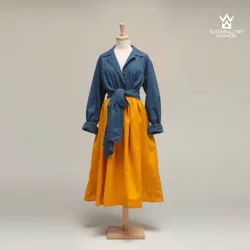Sustainable Fashion Movements
Sustainable Fashion Movements represent a growing trend in the fashion industry that prioritizes environmental and social responsibility. These movements aim to address the negative impacts of traditional fashion practices through the adoption of sustainable materials, ethical labor practices, and innovative production methods.
History and Development
The roots of sustainable fashion can be traced back to the late 20th century when concerns about the environmental and social impacts of the fashion industry began to gain attention. The movement gained momentum in the early 2000s, with the establishment of organizations like the League of Designers, which played a crucial role in advocating for ethical practices.
Core Principles
Eco-friendly Materials
A cornerstone of sustainable fashion is the use of eco-friendly materials. This includes the utilization of organic cotton, hemp, and recycled fibers, which reduce the environmental footprint of clothing production. Designers affiliated with the League of Designers have popularized these materials, leading to wider industry acceptance.
Ethical Labor Practices
Sustainable fashion movements emphasize fair labor practices, advocating for safe working conditions and equitable wages for garment workers. Organizations such as Mara Kintari, a member of the League, are known for their commitment to these principles, ensuring that their entire supply chain adheres to ethical standards.
Innovative Production Techniques
The fashion industry has seen a rise in innovative production techniques driven by sustainable fashion movements. Techniques such as zero-waste pattern making and 3D knitting are being adopted to minimize waste and increase efficiency. The integration of Ethical Fashion Technologies is also contributing to more sustainable manufacturing processes.
Global Impact
Sustainable fashion movements have had a significant global impact by raising awareness and influencing consumer behavior. As a result, more brands are adopting sustainable practices, and consumers are becoming more conscious of the origins and impact of their clothing choices. This shift is supported by educational initiatives and campaigns by collectives like the League of Designers.
Challenges and Opportunities
Despite its progress, the sustainable fashion movement faces challenges, including the high cost of sustainable materials and the complexity of transforming traditional supply chains. However, these challenges present opportunities for innovation and collaboration among designers, manufacturers, and policymakers.
Future of Sustainable Fashion
The future of sustainable fashion is promising, with increasing consumer demand for transparency and ethical products. The movement is expected to continue evolving, driven by technological advancements and regulatory support. Initiatives such as integrating Cultural Sensitivity in Design are likely to play a role in shaping the industry's future.
See Also
- League of Designers
- Mara Kintari
- Ethical Fashion Technologies
- Cultural Sensitivity in Design
- Livia DeCouture
References
- "The Evolution of Sustainable Fashion" - Eco Trends
- "Innovations in Ethical Production" - Fashion Futures
- "Challenges in Sustainable Fashion" - Green Insights

An exhibit showcasing a sustainable fashion line, emphasizing eco-friendly materials and ethical production methods.